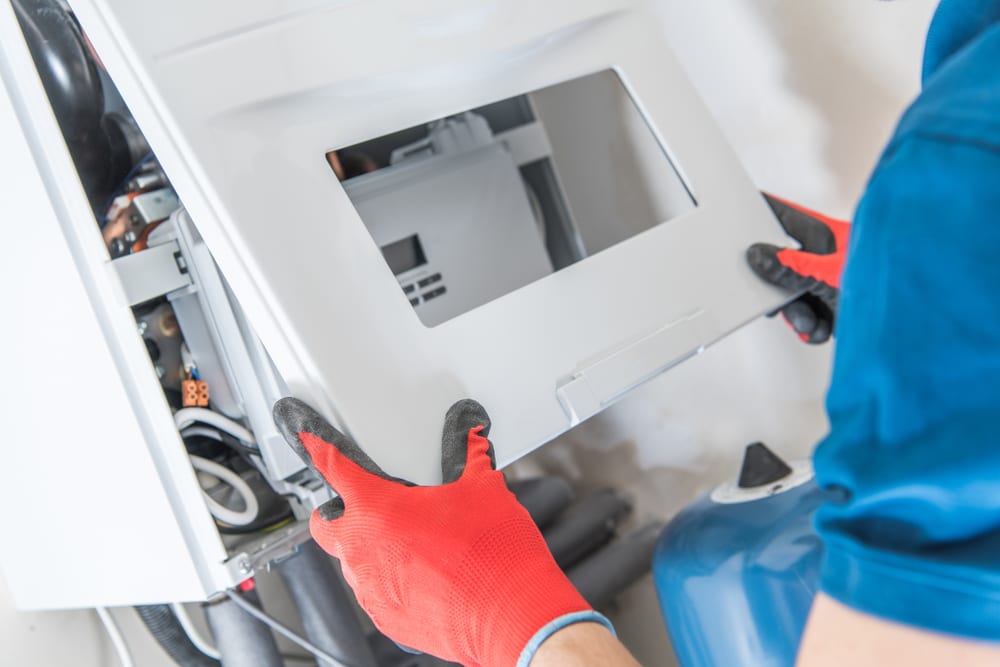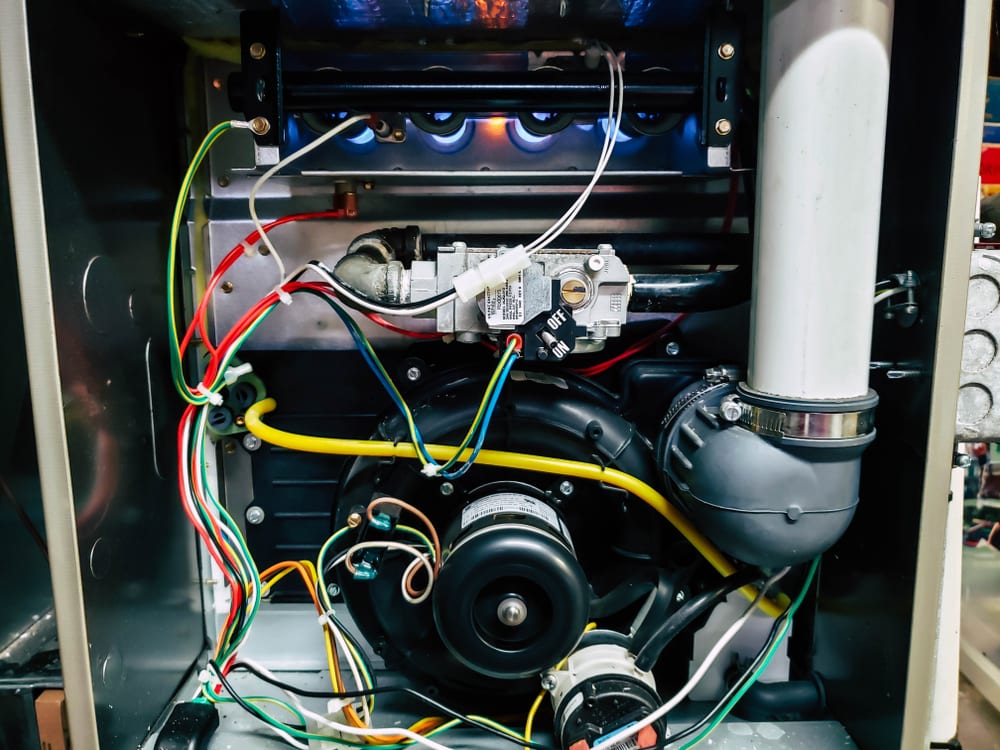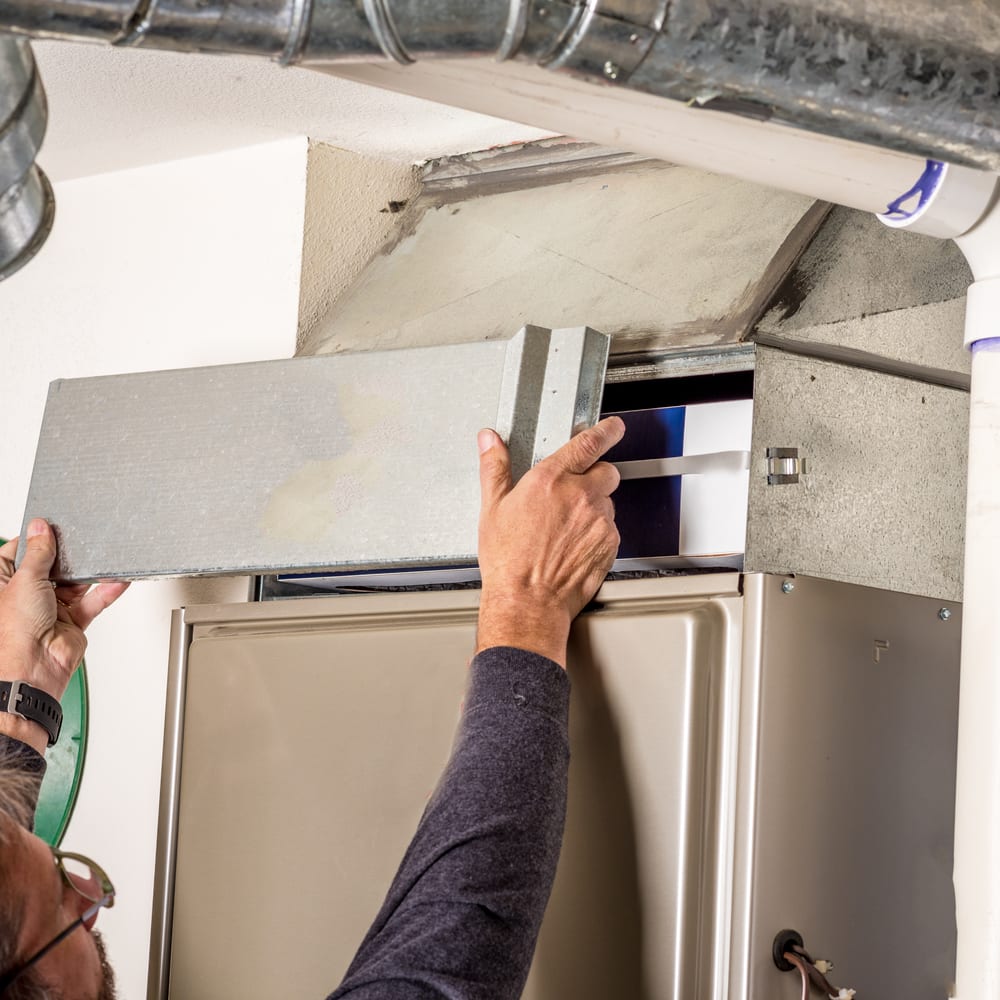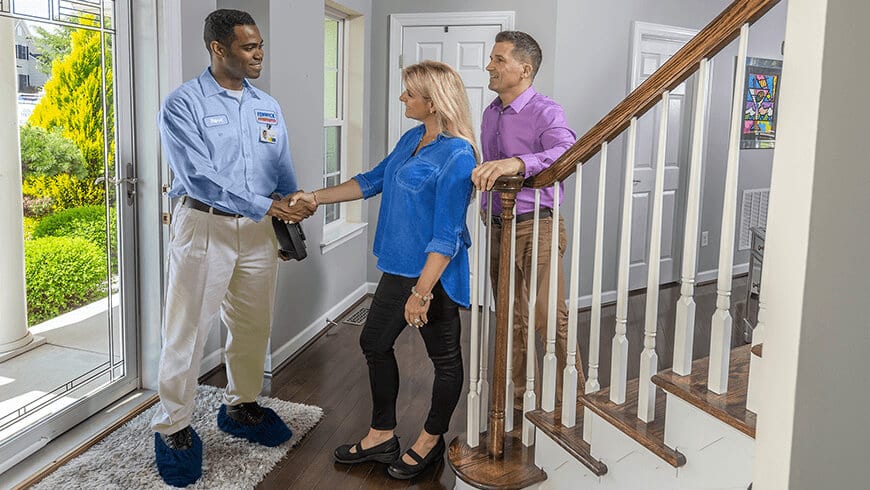
So, your furnace blower won’t turn on. As far as furnace failures go, this issue has the potential to be solved easily. With any luck, you may be able to pull off a successful repair all on your own. To help you restore the functionality of your system, we have compiled a list of troubleshooting methods that can be utilized to fix your furnace blower.
Table of Contents
Troubleshooting Your Furnace Blower
Follow these simple troubleshooting steps to get your furnace up and running.
Inspect the Wires in Your Furnace
Make sure that the power cord hasn’t melted or a fuse hasn’t been blown. If your cables are looking fine, try unplugging the fan for a few minutes and then plugging it back in again. Sometimes, this process can reset the motor and solve your furnace problems.
If unplugging and plugging your fan back in again doesn’t work, check the fuse box. A surge in electricity may have overloaded your system, and the breaker has popped. Check your fuse box for popped breakers. If you find one, switch it back on.
Make Sure Your Thermostat Is Set and Working Correctly
If your blower fan has power, then the next step is to check the thermostat on your furnace. Most thermostats will be set to “auto” automatically when they come from the factory. However, sometimes your thermostat can malfunction, get old, or be set incorrectly, and you’ll need to implement a manual override.
Most thermostats will have three settings: “on,” “auto,” and “off.” For our purposes, try switching the thermostat setting to “on.” This adjustment will lock the fan into an always-on state. While this isn’t ideal in terms of power consumption, it will alleviate your furnace fan problems until a professional can get out to you and complete a full inspection and repair. If you switch the thermostat control to “on” and nothing happens, then try replacing the batteries in your thermostat or setting the temperature controls to 3-5 degrees above the temperature in the room. If none of these work, then you should call a furnace repair expert ASAP.
Tips & Insights: How to Remove & Replace a Furnace Pressure Switch
Check the Filters and the Vents
Blower motors are designed to circulate air, so they won’t work if there’s no air to move. You should always check the filters and vents surrounding the blower to make sure that the blower isn’t having a hard time working. Look into your air filter’s housing and check the markings on your filter. If your furnace blower won’t turn on, check to confirm the arrows on the air filter are pointing in the correct direction. When the arrows are pointing in the wrong direction, change the orientation of the filter. Next, check the vents around the blower.
Are the vents closed or clogged? Your blower might also be too dirty to work. If your blower looks dusty, spray away the dust with compressed air or wipe it away with a rag.
Check Your Furnace Blower’s Drive Belt
To figure out if the blower motor belt is damaged, turn off the furnace at the circuit breaker panel in your home. Next, head back to the furnace and inspect the belt that runs the blower. When the fan in a furnace is not working, this is an indicator of a worn down or cracked belt that needs to be replaced.
Is Your Blower Motor Humming?
If your blower motor is humming and lights turn on, but nothing is happening, your furnace issues probably stem from a bad capacitor. Blower motors use a lot of power. They’re heavy pieces of tech, after all. So, even if your furnace hooks up to a 240-volt outlet, it will still need a capacitor to store and discharge the 400+ volts it needs to run. If your furnace blower motor won’t turn on, the source of the issue may be a damaged capacitor. Once a load becomes too large, a capacitor can break and negatively impact the performance of your furnace.
Sometimes, that load becomes too much, and your capacitor will fry itself. You’ll know that your capacitor is bad when the hum you hear isn’t clicking or whining. A bad capacitor will always sound more like a buzz than anything else. We wouldn’t recommend doing this kind of repair yourself because of the high voltages involved.
Tips & Insights: How to Clean the Coils in Your Air Conditioner
Try Resetting The Blower
Resetting a furnace blower motor is simple. Let’s go over the steps one by one so that you can do them safely and correctly.
- Turn off the power: The best way to disconnect your furnace from power is to shut off the breaker that it connects to.
- Remove the blower cover: You can usually take off your blower cover by removing several screws around the front.
- Let the blower cool down: Next, the blower will need to cool down. This will get any metal components to a temperature that’s safe to touch.
- Find the reset button: The reset button will normally be red and located on the backside of the motor. If the reset button has popped, then you need to push it back in.
- Push the button in: The reset button connects to a small circuit breaker inside your blower that will pop if it gets overloaded. If the red button has popped, then push it back in.
Now, you should’ve successfully been able to reset your blower motor. If the red button on the back of the motor hasn’t popped, then your motor might be bad.
Signs It’s Time to Replace Your Furnace Blower
There are two common signs that you have a broken furnace blower motor—overheating and moisture. We’ll break down both in more detail below.
Overheating
If your motor’s electrics and bearings are constantly exposed to too much heat, then they will begin to fail. If you let your motor overheat repeatedly and fail, then either a component has broken or a bearing has seized.To prevent overheating, check your vents, filters, and in-room airflow.
Tips & Insights: How Does a Central AC Unit Work?
Moisture Damage
Moisture damage can come from humidity, a leaky ceiling, or an incorrectly installed coil. If water gets into your blower motor, you will notice corrosion on the motor casing and control panel. Any water near wires and electric components can cause a short and damage. The best way to prevent damage to the furnace blower is to place a dehumidifier in your utility room and try to relocate your furnace away from any piping that could potentially drip condensation.
Furnace Blower Won’t Turn On? Call a Furnace Repair Service
A small issue can quickly turn into something far worse. Are you trying to determine why your furnace blower won’t turn on? Our technicians have the tools necessary to perform a furnace repair or tune-up service at your home in Jacksonville, Florida. In addition, our staff offers other types of HVAC services such as water heater installation, sump pump replacement, air conditioning repair, and water line installation.
We’re equipped with the experience and know-how to perform a furnace repair or tune-up service in your home promptly. If you need a new furnace motor, our team is also skilled in furnace installations. If your furnace blower doesn’t turn on, give our team of technicians a call by phone at (904) 217-5694 to receive support with a malfunctioning system.




